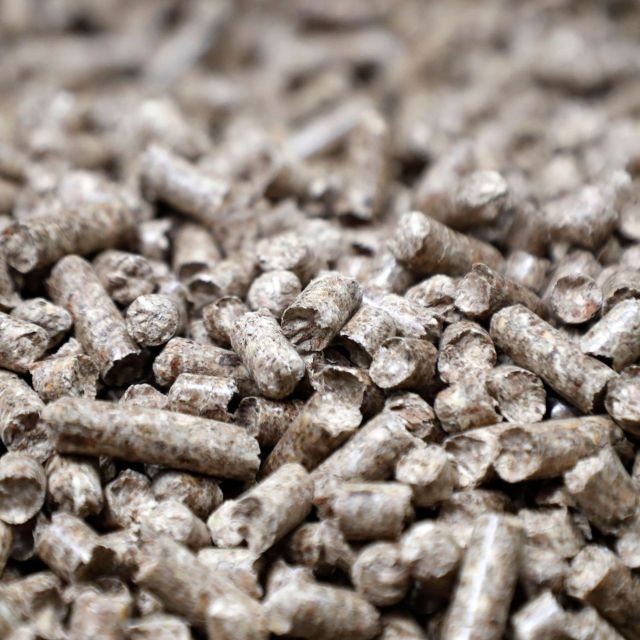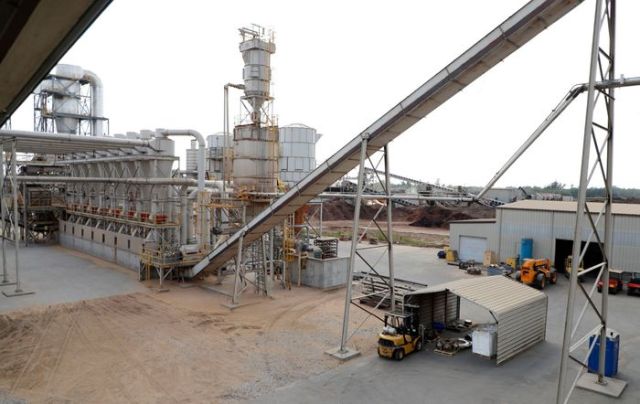The Trade That Backfired for America’s Biggest Wood-Pellet Exporter
Enviva made a wager to buy pellets from a customer and resell them, but then prices fell
ETHAN HYMAN/TNS/ZUMA PRESS
By
Nov. 22, 2023 5:30 am ET
A wrong-way bet on the price of wood pellets has jeopardized America’s biggest exporter of the fuel, even though demand has never been higher among the European and Asia power plants burning wood instead of coal.
Still, Enviva’s most pressing problem is a single bad trade.
Enviva said in a securities filing that a wager made during last year’s fourth quarter has left it on the hook to pay $296.3 million this year for 800,000 metric tons of wood pellets that will only fetch $156.9 million on the open market.
Based on current prices for future deliveries of pellets, another roughly $140 million loss looms over the next two years as well, the company said.
“Absent a significant and near-term increase in wood-pellet market pricing, we expect [the trade] will continue to have a negative impact on our profitability, cash flows and liquidity through 2025,” Glenn Nunziata, who was appointed interim chief executive earlier this month, said on a conference call with analysts.
Enviva said it has enlisted investment bankers, lawyers and restructuring advisers to negotiate with lenders and counterparties and to explore alternatives.
Enviva didn’t comment for this article nor did executives hold their customary question-and-answer session with Wall Street analysts during their Nov. 9 quarterly earnings call.
“The fact of the matter is we have a great deal of work ahead of us before we will be in a position to provide satisfactory answers to many of those questions,” said Nunziata, who was hired as finance chief in August.
With 10 plants across the South and six marine terminals, Enviva accounts for most U.S. exports of wood pellets. PHOTO: ETHAN HYMAN/TNS/ZUMA PRESS
Wood pellets are cylinders of compressed wood about the width of a piece of chalk. They originated decades ago to make use of sawdust that piled up at mills and were traditionally sold by the bag to burn in cabin stoves. The market for pellets by the boatload emerged more recently when rules in Europe encouraged biomass over fossil fuels.
Enviva started building a pellet manufacturing and export network in 2010 with financing from Riverstone. The strategy was to have plants in parts of the pine belt abandoned by paper mills to avoid competition for low-grade timber that sawmills couldn’t use.
Enviva pitched its plants to local officials eager to deliver jobs to rural areas and willing to arrange economic-development grants and tax breaks. To investors, Enviva made the much-contested claim that burning wood to generate electricity is renewable energy, reasoning that saplings usually replace the trees it grinds into pellets.
U.S. wood-pellet exportsSource: Foreign Agricultural Service
2012’15’200123456789million metric tonsthrough September
With 10 plants across the South and six marine terminals, Enviva accounts for most U.S. exports, which have increased steadily over the past decade as pellets spread to more countries. Exports through September were 6% higher than the same period last year, when a record 9 million metric tons were eventually shipped, according to Foreign Agricultural Service data.
Despite market dominance, Enviva’s plants have been beset by operational snags that have sapped profits, executives and analysts say. In the spring, Enviva assured investors there was plenty of money to return to shareholders. A month later, it cut its dividend.
Executives said not paying dividends would help fund expansion, including construction of new plants in Bond, Miss., and Epes, Ala., designed to be the world’s largest. Investors weren’t assuaged and the stock plunged.
It should have been a great time to be the world’s largest pellet exporter. Prices and exports were running high following Russia’s invasion of Ukraine, which sent European utilities rushing to replace Moscow’s sanctioned coal, natural gas and wood pellet products.
SHARE YOUR THOUGHTS
Should wood pellets be burned to generate electricity? Join the conversation below.
Though most pellets are sold under long-term contracts, prices in the spot market surged to twice the prevailing contract rates.
Enviva bet pellets would remain in short supply and on-the-spot deliveries would get even more expensive, and it struck its ill-fated trade with an undisclosed customer in Europe. But a warm winter and extraordinary conservation measures allowed European fuel stockpiles to swell and prices of natural gas, coal and pellets dropped.
Pellets now sell on the spot market for about half of what they fetched when Enviva made the trade, Nunziata told investors.
“Historically, Enviva did quite well with these spot market activities,” said Pavel Molchanov, a Raymond James analyst. “But as every trader knows, your luck runs out at some point.”
Write to Ryan Dezember at ryan.dezember
F. Robert Jacobs
Professor Emeritus of Operations Management
Operations and Decision Technologies
Indiana University, Bloomington
jacobs
812-219-5088


